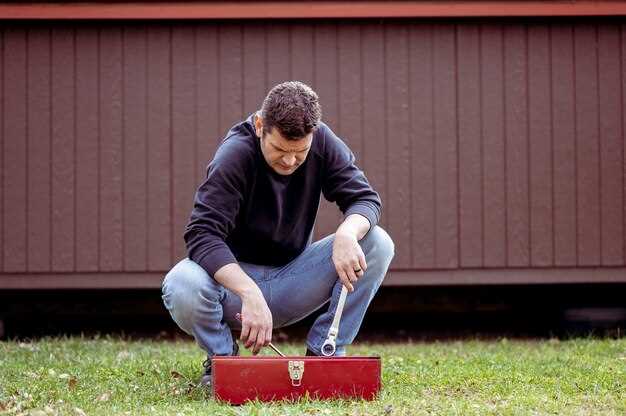
In the world of diy automotive repair, self-serve yards have emerged as a valuable resource for enthusiasts and those looking to save money on car parts. These yards provide a unique opportunity to source hard-to-find components at a fraction of the retail price. Understanding how to navigate these facilities effectively is essential for maximizing your experience and securing the parts you need.
Equipping yourself with the right tools is a crucial first step when planning to pull your own parts. Each trip to a self-serve yard requires not only a basic toolkit but also specific equipment tailored to the type of components you’re after. From wrenches and ratchets to specialty tools for removing sensors and fixtures, being prepared can save time and effort.
Self-serve yards operate on a simple premise: you bring your own tools and muscle power to find and extract the parts you need from a wide selection of vehicles. However, success in these yards also hinges on knowing what to look for and how best to approach the task. By familiarizing yourself with typical car layouts and common removal techniques, you can streamline your parts hunting experience and leave with exactly what you came for.
Necessary Tools for DIY Salvage Work

Engaging in DIY salvage work at self-serve yards requires a specific set of tools to ensure efficiency and safety. First and foremost, a sturdy pair of gloves is essential to protect your hands from sharp edges and debris. A good pair of work gloves will allow you to handle various parts without risking injury.
A reliable set of hand tools, including wrenches, sockets, and pliers, is needed to disassemble components effectively. Socket wrenches with various sizes will help you tackle different fasteners, while pliers can be invaluable for gripping and twisting parts. Having a multi-tool can add versatility, serving multiple functions without needing to bring an extensive toolbox.
The next important category of tools includes cutting equipment. A reciprocating saw or a hacksaw is vital for cutting through metal and plastic parts that may be difficult to remove otherwise. These tools are particularly useful for accessing hard-to-reach areas or removing components that are bolted or glued in place.
If you’re planning on salvaging larger items, a crowbar or pry bar will be helpful for applying leverage. These used in combination with your hand tools can make the removal of heavy components much easier and safer. Additionally, a magnetic pickup tool can assist in retrieving dropped screws or small parts, saving time and minimizing frustration.
Finally, don’t forget about storage solutions. A sturdy toolbox or portable container will help you keep your found parts organized and secure while you are working in the yard. Carrying a refillable water bottle is also wise to stay hydrated during long salvage sessions.
Equipping yourself with these necessary tools will ensure that your DIY salvage work is both productive and enjoyable. Planning ahead and bringing along the right equipment will enable you to maximize your time and effort at the self-serve yard.
Step-by-Step Process for Safely Removing Parts
To efficiently and safely remove parts from vehicles at a self-serve yard, follow this detailed process. Begin by gathering all necessary tools that you will need throughout the procedure, which may include wrenches, screwdrivers, pliers, and safety goggles.
Next, assess the vehicle you are planning to dissect. Ensure that you have permission to work on that specific car and examine its condition. Look for signs of rust or corrosion that might complicate the removal of certain parts.
Once you have identified the parts you want, prepare your work area within the yard. Make sure you have enough space to maneuver and that the ground is stable. Organize your tools nearby for easy access.
Your next step is to disconnect the battery. This precaution prevents any electrical issues while you work. Make sure to wear gloves to protect your hands from any sharp edges or hot components.
Now, proceed to remove the screws, bolts, or clips securing the parts you want. Use the correct tool for each job. If a fastener is stuck, do not force it; instead, apply penetrating oil and wait a few minutes for it to set.
Once the parts are detached, carefully lift them out, ensuring no additional components are damaged during the removal. If the part is heavy, seek assistance to avoid injury.
Finally, clean your workspace and return any leftover tools to their designated place. Ensure that the area is safe for other visitors in the yard.
Tips for Evaluating the Quality of Salvaged Components

When visiting a self-serve yard for DIY projects, assessing the quality of salvaged components is crucial for a successful outcome. Here are some key tips to help you evaluate these parts effectively.
1. Inspect for Damage: Always begin by checking for physical damage. Look for cracks, rust, or any signs of wear. Components that show significant degradation are likely to fail sooner than expected.
2. Verify Compatibility: Ensure that the part you are considering matches specifications for your project. Verify the part number, dimensions, and any other necessary identifiers to prevent compatibility issues during installation.
3. Assess Functionality: If possible, test the functionality of the part before removing it from the yard. For components like engines or electronics, this might involve starting the engine or testing connections. Utilize tools available in the yard, if allowed, to assist with this evaluation.
4. Check Connectors and Mountings: Examine all connectors, mountings, and attachment points. Worn or broken connectors can lead to installation problems, impacting the overall performance of your DIY project.
5. Research Common Issues: Before heading to the yard, research the common issues associated with the parts you need. Being aware of potential failures in specific components can guide your evaluation process.
6. Choose Reputable Yards: Selecting a well-reviewed self-serve yard increases the chances of finding quality components. Look for yards that have a good reputation within the DIY community for providing reliable parts.
7. Don’t Rush: Take your time during the evaluation process. Rushing may lead to overlooking defects or compatibility issues. The more careful you are, the better the quality of the parts you’ll take home.
By following these tips, you can significantly enhance your chances of sourcing quality salvaged components for your DIY projects, ensuring they perform well and last longer.
